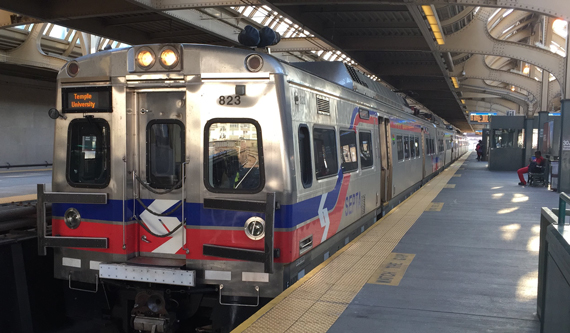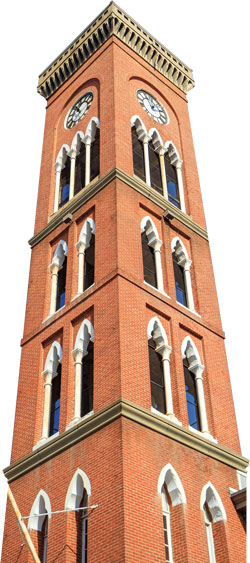Trending
National market report
Chicago's Riverline development breaks ground,</br> Chinese investors target Seattle, and more...

Chicago
Adesolate industrial stretch along the Chicago River will soon be transformed into a $1.5 billion housing development flanked by a public river walk with kayak rentals, the most recent in a flurry of projects revitalizing and redeveloping the city’s riverfront, the Wall Street Journal reported. The Riverline project, designed by Perkins + Will with landscape architects Hoerr Schaudt, broke ground in September. Over the next decade, joint-venture partners Lendlease and CMK Companies plan to replace an empty sprawl of concrete and train tracks just south of Chicago’s downtown Loop with eight high-rise apartment towers and dozens of townhomes. Housing will be located adjacent to a public park — longer than five football fields — that will provide a continuous path along the river. “The open space was the major initial driver of the development,” said Tom Weeks, Lendlease’s general manager of development. Young, well-educated workers are flocking to walkable urban centers across the U.S., and Chicago is no exception, despite the rising crime rate on the South and West sides of the city, and developers are eager to meet their needs. Related Midwest is in the early stages of its own 62-acre, 15-year waterfront redevelopment plan, directly south of Riverline.
Seattle
Chinese property hunters — who have poured money into the New York, Los Angeles and San Francisco housing markets in recent years — now have their sights trained on Seattle. The popularity of the city, whose prices can seem like bargains compared to those other cities, intensified in July, when Vancouver, B.C., began levying a 15 percent tax on international homebuyers, according to the Seattle Times. But the surge is now also driving up the price of Seattle-area homes, particularly large and upscale homes in the suburbs. “It’s a bit like plugging a hole in a dike — the water will spring out somewhere else,” said Anna Riley, a Seattle real estate broker who caters to clients from abroad. Chinese buyers spent $1.6 billion on homes in Washington State in 2015, with many of those deals all-cash, the Seattle Times reported. Locals hoping to get on the property ladder or trade up are not pleased. Home prices have more than doubled during the past five years in Seattle suburban satellite cities West Bellevue, Medina and Mercer Island, with the median price now $1.3 million. Although foreign home-seekers cite good public schools as a dominant purchasing criteria, part of the buying activity is likely speculative. “The more it goes up, the more [the Chinese buyers] want to buy. They want to be along for the ride,” said Amy Chen, whose family owns property in Bellevue.

30th Street Station
Philadelphia
The city of brotherly love could soon get its own version of Hudson Yards. Philadelphia’s City Council is considering a rezoning proposal that would allow for high-density mixed-use development along John F. Kennedy Boulevard and Market Street near 30th Street, an area now reserved for industrial use, the Philadelphia Business Journal reported. If passed, the change would pave the way for a proposed $3.5 billion, 20-year redevelopment. Drexel University and NYSE-listed Brandywine Realty Trust, which are behind the rezoning push, hope to begin construction on an “innovation zone” in 2018, starting with a 700,000-square-foot mixed-use facility built on 10 acres of land the university owns near 30th Street Station, a major intercity and regional-rail transit hub.

Old Town Mall
Baltimore
Baltimore’s Old Town Mall area is getting a redevelopment with a significant affordable-housing component. Developers are planning to fill 16 now-vacant acres near the city’s Old Town with 76,000 square feet of market-rate and government-subsidized residential space, a 40,000-square-foot grocery-store-cum-cafe and a 45,000-square-foot park, the Baltimore Business Journal reported. The project is intended to bring pedestrians to the area, connecting it with Johns Hopkins University medical campus, which is four blocks away. Three local developers — Beatty Development Group, Henson Development Company and Commercial Corp. — have teamed up with Philadelphia-based Mission First, a manager of affordable housing, on the project, and plan to start construction in late 2017. “Our goal is to reconnect as many of these pieces as we can,” Tim Pula, senior development director for Beatty Development, was quoted as saying. The first residential building slated for construction will be 65 percent affordable, and the second will be 100 percent affordable senior housing. Successive phases, which could add a million square feet of office space to the area, are contingent on buying more city-owned sites, some of which house a recreation center and a public school.




